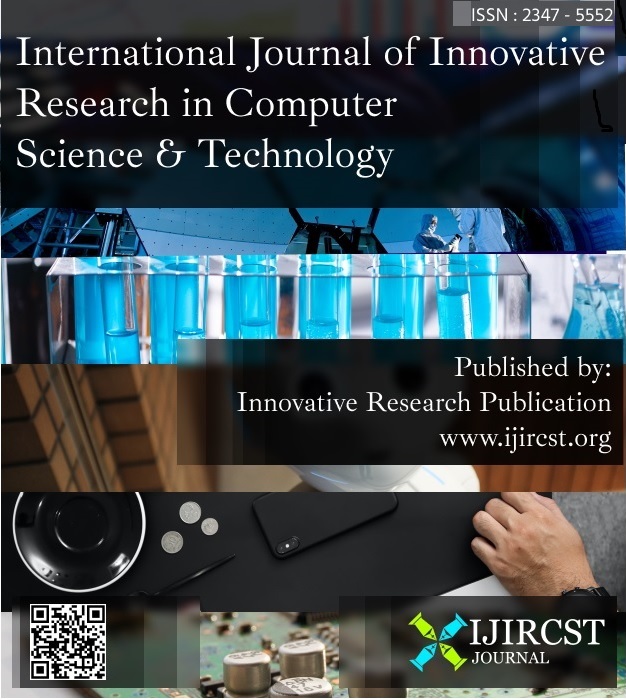A Study on Channel Access Algorithms for the Cellular Systems
Keywords:
Base Station, Interference,, Channel Allocation, Centralized Control, Distributed Control, MultimediaAbstract
Recently, there has been a lot of focus on channel distribution and handoff techniques for cell structures in order to provide long-term organizations that provide QoS to convenient customers. We have a well
organized discussion of various characterizations of remote channel distribution strategies in this research The major purpose of the evaluation is to give a complete analysis of various characterizations of reroute assignment computations in cell structures, as well as to recommend future research paths in the field. This paper examines dispersed articles in order to evaluate channel distribution schemes for cell structure. The Quality of Service (QoS) is consistently a major issue for organizations represented by cell structures, and it is evident that there are ongoing compromises among the many constraints of these organizations' QoS. Many articles have been published that deal with various QoS restrictions, such as call discouraging probability, call dropping probability, and other execution limits. This study delves into the specifics of the various types of channel apportioning strategies, such as static channel assignment, dynamic channel dispersion, and creamer reroute distribution. In addition, we investigate the distinct channel segment frameworks in this study, recalling the situations in which channel appropriation philosophies based on consolidated channel management, dispersed channel control, normal aversion computations, and inherited estimates are applied. We've also compiled a list of compromises between several direct component ideas in terms of their multidimensional character and implementation. In this work, the use of force the leaders in channel assignment is described in a different setting of perplexing situations, such as those developing in commitment blended media based organizations and others arising in the channel job for adaptable base station structures. This study also looks at new handoff management strategies and prioritizing plans suggested in the composition for cell architectures.
Downloads
References
Y. S. Duksh, B. K. Kaushik, S. Sarkar, and R. Singh, “Effect of driver size and number of shells on propagation delay in MWCNT interconnects,” 2011, doi: 10.1109/ICDECOM.2011.5738559.
A. Mandal, B. K. Kaushik, B. Kumar, and R. P. Agarwal, “Implementation of adaptive FIR filter for pulse doppler radar,” 2011, doi: 10.1109/ICDECOM.2011.5738539.
S. K. Mishra, N. Garud, and R. Singh, “Development and evaluation of mucoadhesive buccal patches of flurbiprofen,” Acta Pol. Pharm. - Drug Res., 2011.
E. Ikonen, “Cellular cholesterol trafficking and compartmentalization,” Nature Reviews Molecular Cell Biology. 2008, doi: 10.1038/nrm2336.
Y. Jiao, B. Zhu, J. Chen, and X. Duan, “Fluorescent sensing of fluoride in cellular system,” Theranostics. 2015, doi: 10.7150/thno.9860.
Y. Xin, D. Wang, J. Li, H. Zhu, J. Wang, and X. You, “Area Spectral Efficiency and Area Energy Efficiency of Massive MIMO Cellular Systems,” IEEE Trans. Veh. Technol., 2016, doi: 10.1109/TVT.2015.2436896.
J. Jia et al., “MERIT, a cellular system coordinating lysosomal repair, removal and replacement,” Autophagy, 2020, doi: 10.1080/15548627.2020.1779451.
T. J. Perkins and P. S. Swain, “Strategies for cellular decision-making,” Molecular Systems Biology. 2009, doi: 10.1038/msb.2009.83.
E. Golikova, “Introduction of D-AMPS IS-136 standard in Russia,” Jisuan Jiegou Lixue Jiqi Yingyong/Journal Comput. Struct. Mech. Appl., 1998.
V. Singh and A. K. Chaudhary, “Preparation of Eudragit E100 microspheres by modified solvent evaporation method,” Acta Pol. Pharm. - Drug Res., 2011.
X. Lin, N. B. Shroff, and R. Srikant, “A tutorial on cross-layer optimization in wireless networks,” IEEE J. Sel. Areas Commun., 2006, doi: 10.1109/JSAC.2006.879351.
R. Vaddi, S. Dasgupta, and R. P. Agarwal, “Two dimensional analytical subthreshold swing model of a double gate MOSFET with Gate-S/D underlap, asymmetric and independent gate features,” 2011, doi: 10.1109/ICEDSA.2011.5959057.
R. Vaddi, S. Dasgupta, and R. P. Agarwal, “Two dimensional analytical subthreshold current model of a generic double gate MOSFET with gate underlap,” 2011, doi: 10.1109/ICEDSA.2011.5959058.
A. Stauffer and M. Sipper, “On the relationship between cellular automata and L-systems: The self replication case,” Phys. D Nonlinear Phenom., 1998, doi: 10.1016/S0167-2789(97)00255-8.
A. E. Williams, R. K. Gupta, and A. I. Zaghloul, “Personal communications via present and future satellite systems,” 1996, doi: 10.1109/mwsym.1996.511014.
D. Kumar and R. Singh, “Anticataract activity of Acorus calamus Linn. against hydrogen peroxide
induced cataractogenesis in Goat eyes,” Int. J. Pharm. Sci. Rev. Res., 2011.
M. H. Salmani, S. Rehman, K. Zaidi, and A. K. Hasan, “Study of ignition characteristics of microemulsion of coconut oil under off diesel engine conditions,” Eng. Sci. Technol. an Int. J., 2015, doi: 10.1016/j.jestch.2014.12.002.
S. Mishra and S. Jain, “A study of various approaches and tools on ontology,” 2015, doi: 10.1109/CICT.2015.43.
S. Mishra and S. Jain, “Ontologies as a semantic model in IoT,” Int. J. Comput. Appl., 2020, doi: 10.1080/1206212X.2018.1504461.
M. Andrews and L. Zhang, “Utility optimization in heterogeneous networks via CSMA-based algorithms,” Wirel. Networks, 2017, doi: 10.1007/s11276-015-1149-z.
J. W. Won and J. M. Ahn, “3GPP URLLC patent analysis,” ICT Express. 2021, doi: 10.1016/j.icte.2020.09.001.
S. Y. Lien et al., “3GPP NR Sidelink Transmissions Toward 5G V2X,” IEEE Access, 2020, doi: 10.1109/ACCESS.2020.2973706.
S. Henry, A. Alsohaily, and E. S. Sousa, “5G is Real: Evaluating the Compliance of the 3GPP 5G New Radio System with the ITU IMT-2020 Requirements,” IEEE Access, 2020, doi: 10.1109/ACCESS.2020.2977406.
J. Cao et al., “A survey on security aspects for 3GPP 5G networks,” IEEE Communications Surveys and Tutorials. 2020, doi: 10.1109/COMST.2019.2951818.
